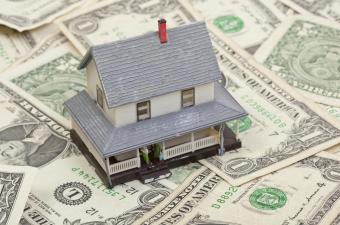The latest quarterly report from the ""National Association of Realtors"":http://www.realtor.org/ (NAR) shows home purchasing power remained high in the first quarter even as median prices continued their upward trend.
[IMAGE]Nationally, the median existing single-family home price was $176,600, up 11.3 percent year-over-year--the strongest yearly price increase since the fourth quarter of 2005, when the national median price jumped 13.6 percent.
Distressed sales--foreclosures and short sales generally sold at deep discounts--accounted for 23 percent of first-quarter sales, down from 32 percent during Q1 2012.
According to NAR, the median existing single-family home price rose in 133 out of 150 metropolitan statistical areas (MSAs) in the first quarter compared to the same period last year. That figure is compared to Q4 2012, which in itself saw nearly double the number of markets showing gains compared to the year before.
NAR chief economist Lawrence Yun said many areas are experiencing a seller's market.
""The supply/demand balance is clearly tilted toward sellers in a good portion of the country. Inventory conditions are expected to remain fairly constrained this year, so overall price increases should be well above the historic gain of one-to-two percentage points above the rate of inflation. If home builders can continue to ramp up production, then home price growth is expected to moderate in 2014,"" he said.
Yun added that previously hard-hit markets like Phoenix, Sacramento, and Miami continued their dramatic turnaround, while areas like Atlanta, Minneapolis, and [COLUMN_BREAK]
Seattle have begun to show signs that they might be ready to bounce back.
While the market might be balanced toward sellers, NAR president Gary Thomas commented that conditions are still good for buyers.
""Even with rising home prices, there is still plenty of buying power in the market,"" he said. ""Historically low mortgage interest rates and home prices that remain well below their peak mean most buyers can purchase well within their means, assuming they meet ongoing stringent credit standards.""
According to the association, the national median family income was $62,200 in Q1. In order to purchase a home at the national median price, a buyer making a 5 percent down payment would need an income of $36,500. At a 10 percent down payment, the required income would be $34,600, and at 20 percent, the required income would be $30,700.
NAR also reported on existing-home sales (including single-family and condo) for the first quarter. Total existing-home sales were at a seasonally adjusted annual rate of 4.94 million, up 0.8 percent from Q4 and 9.8 percent over Q1 2012. Sales were at the highest level since Q4 2009, when they reached a rate of 4.95 million as buyers responded to tax incentives.
Regionally, existing-home sales rose 4.4 percent quarter-over-quarter and 9.1 percent year-over-year in the Northeast. The median existing single-family home price was $234,000, up 2.9 percent from the first quarter of 2012.
In the Midwest, existing-home sales increased 1.2 percent over Q4 2012 and 15.0 percent over Q1 2012. The median existing single-family home price was $135,100, an increase of 8.2 percent year-over-year.
Existing-home sales in the South edged up 0.7 percent in the first quarter, coming in 13.3 percent above the same period last year. The regional median price was $156,800, 9.3 percent above Q1 2012.
Finally, existing-home sales declined 1.1 percent quarter-over-quarter in the West, reflecting the region's severe supply shortage. Year-over-year, sales were up 0.6 percent. The median existing single-family home price in the region was $247,800, an annual increase of 24.4 percent.

 theMReport.com Your trusted source for mortgage banking news
theMReport.com Your trusted source for mortgage banking news









